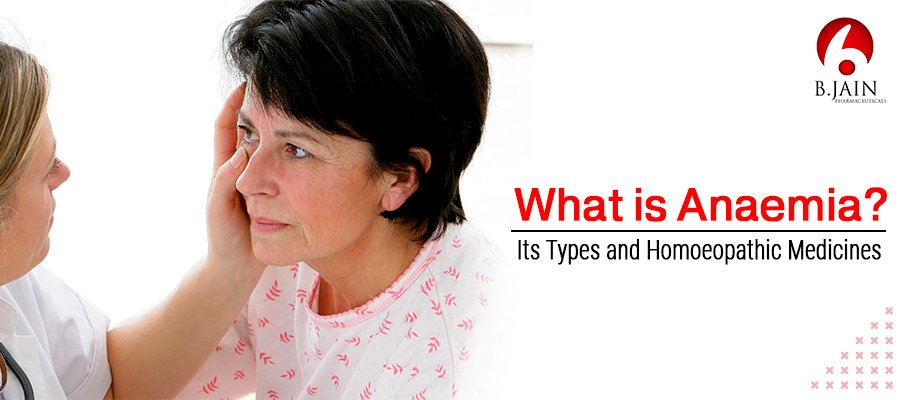Anemia or Anaemia is a medical condition in which the Red Blood Cells are unable to carry adequate Oxygenated blood. This can happen either due to a decreased number or function in the red blood cells or erythrocytes themselves or a reduced amount of hemoglobin- a protein found in the RBCs that carries oxygen to various parts of the body and given blood its red colour.
As per WHO reports, 42% of children below 5 years of age and 40% of pregnant women worldwide are anemic. So much so that one-third of all women in the reproductive age are anemic. Anemias causes include: Nutritional deficiencies, hemoglobinopathies and diseases.
There are 3 basic mechanisms by which anemia is developed:
Symptoms of Anemia Include the following:
- Weakness, Fatigue and Debility
- Pale or Yellowish skin
- Cardiac symptoms such as Irregular heartbeat, palpitations, chest pain. Low Blood Pressure.
- Dizziness, headaches and light headedness. Fainting.
- Diarrhea
- Cold hands and feet
Vertical Nail ridges in Anemia
Types of Anemia are as follows:
- Iron Deficiency Anemia:
This is the most common form of Anemia and occurs due to a shortage of iron in the body. Iron is essential for the synthesis of hemoglobin. It can occur in cases of pregnancy and due to severe blood loss such from menorrhagia or injuries, stomach ulcers and cancers can cause this anemia. Risk factors for Iron Deficiency anemia include women, infants, children, vegetarians and frequent blood donors. This is because its cause lies in excessive blood loss, lack of nutritional supplementation, absorption disorders and pregnancy. Pica is a symptom seen in iron deficiency anemia that causes an unusual craving for indigestible foods. It is very important to find out the cause of iron deficiency anemia in order to prevent it from recurring.
- Vitamin Deficiency Anemia:
Other than iron, the body requires folate and vitamin B 12 as well for the production of healthy red blood cells. Hence a deficiency of these can lead to anemia known as Pernicious anemia. Folate deficiency can occur due to lack of nutrition, from absorption issues such as due to intestinal troubles like in Crohn’s disease, excessive alcohol consumption and some medications such as anti-seizure medicines or from surgical removal of the intestines. Folate deficiency in pregnancy can cause neural tube defects in the offspring.
Vitamin B 12 deficiency results from inadequate supply from the diet, gastric surgeries, intestinal absorption issues and from Pernicious anemia in which the stomach lining is destroyed and is unable to produce Intrinsic factor which is essential for the absorption of Vitamin B12 in the body.
- Aplastic Anemia:
This condition occurs when the body is unable to produce enough RBCs. This can occur due to toxins and some diseases. It is a rare disorder and can be both acute or chronic in nature, it can even prove to be fatal in some. It results from the immune system attacking its own bone marrow and is usually preceded by a trigger such as exposure to toxins, viral infections, pregnancy, certain medications or can be purely autoimmune by nature. Sometimes it can be idiopathic as well. Fanconi Anemia is a rare condition that is an inherited form of aplastic anemia and can reduce the lifespan of a person, patients usually live up to 18 years of age.
- Hemolytic Anemia:
This occurs when the body is unable to replenish the destroyed RBCs, ie, the erythrocytes are destroyed at a faster rate than at which they are produced. It can be inherited such as in cases of Thalassemia and Sickle cell anemia or can be acquired due to causes such as infections, medications, blood cancer, spleen issues, after blood transfusion, autoimmune disorders or from mechanical heart valves causing physical injury to the cells. Symptoms include confusion, weakness, dizziness, jaundice, fever, tachycardia and heart murmurs.
- Sickle Cell Anemia:
This is a genetic and congenital condition in which the shape of the cells is abnormal leading to anemia. It is an autosomal recessive disorder, that is the person must acquire copies from both parents of the specific defective gene to exhibit symptoms. Having only one copy of the gene makes a person a carrier and their progeny can present with symptoms. It occurs when two copies of the Beta globin gene are inherited from both the parents in chromosome 11. This gene is responsible for the production of hemoglobin and given RBCs their round disc like share under normal circumstances. Sickle cell patients develop sickle shaped RBCs which can be triggered by stress such as high altitude, acute diseases, dehydration and temperature changes. Symptoms and complications include anemia, sudden bouts of acute pain (sickle cell crises) from occlusion of vessels, anemia, swollen extremities, infections, organ damage, visual disturbances, gall stones, DVT, pulmonary hypertension and stroke. 80% of cases are seen in individuals with African ancestry.
- Thalassemia:
It is an inherited disorder that affects the Hemoglobin levels in the body. It can be of two types- Alpha or Beta depending upon the chain of Hemoglobin being affected. 4 genes are involved in making the Alpha chain and severity of Thalassemia depends on the number of these with defects. Beta chain is made up of two genes and can lead to Thalassemia Minor or Major depending upon whether just 1 is affected or both are. Complications of Thalassemia include iron overload which can happen from frequent blood transfusions required for the management of the disease, frequent infections, bone deformities form expansion of the bone marrow, enlarged spleen, slowed growth rates and heart troubles.
Diagnosis of Anemia:
Anemia can be diagnosed by a number of Blood tests such as:
- CBC:
It is a detailed report including hematocrit, hemoglobin levels, RBC, WBC with their differential counts, Platelets as well as MCV (Mean Corpuscular Volume). Together MCV, MCH and MCHC are known as the Red Cell incidences first described by Wintrobe.
MCV Defines the size of the red blood cells, the normal value being 87+/-7 fl.
MCH (Mean Corpuscular Hemoglobin) tells the amount of hemoglobin per red blood cell, normal value being 29+/-2 pg.
MCHC (Mean Corpuscular Hemoglobin Concentration) indicates the amount of hemoglobin per unit volume. Normal values being 34+/-2 g/dl.
- Reticulocyte Count:
Corrected for anemia, indicates bone marrow production of new RBCS and is usually ordered in cases of Normal or High MCV. It measures the number of red blood cells that are still developing. Reticulocytes are released from the bone marrow and usually take 2 days to mature into RBCs. A high reticulocyte count could indicate hemolytic anemia or hemolytic disease of the newborn (reticulocytosis). Low counts can indicate iron deficiency anemia, pernicious anemia, aplastic anemia, bone marrow failure, kidney disease or cirrhosis of the liver.
- Peripheral Smear:
It involves looking at a sample of the blood under a microscope. It alone is a major indicator of many conditions such as hemolytic anemia, megaloblastic anemia, infections such as malaria and giant platelets.
- Iron Profile:
It helps check the amount of iron stored in the tissues. It includes tests such as Serum iron, Total Iron Binding Capacity (TIBC) and Transferrin Saturation.
- Bone Marrow Biopsy:
Rarely recommended, it is advised when there is insufficient data to reach a diagnosis. It can be advised in cases of splenomegaly, lymphadenopathy and cancers.
Homoeopathic Medicines for Anemia:
Although there are a variety of medicines for Anemia, it becomes essential to have a combination of remedies to address the various symptoms and aspects of anemia. B Jain Pharmaceuticals has 2 wonderful remedies for this disease:
- Omeo Anaemia Medicated Syrup:
It acts a blood booster and helps deal with symptoms of anemia such as weakness, fatigue, palpitations etc.
It contains excellent Homoeopathic remedies such as:
- Ferrum lacticum: It is an excellent remedy for anemia due to nutritional deficiencies. It helps improve energy levels and mental alertness.
- Ammonium aceticum: Prepared from acetate of ammonia its characteristic symptom includes heaviness in the head and sensation of scraping in the throat.
- Natrum phosphoricum: Indicated for jaundice, dysphagia, sour vomiting, pale thin and watery menses.
- Kali phosphoricum: Prostration, weakness, tiredness are its indicators. Vertigo, offensive breath, pale and delayed menses.
- Acidum citricum: Useful in cases of fatigue and exhaustion.Irregular menses with profuse bleeding and pain.
- Acidum phosphoricum: Debility, nervous exhaustion, loss of vital fluids. Bleeding of gums and a pale earthy face. Weakness and pain in chest, diarrhea.
- Glycerinum: It is a useful remedy in diseases caused by deficiencies, improves the state of nutrition. Profuse and long lasting menses with great exhaustion.
It is made of 4 Tissue salts which are best for Anemia and its symptoms. It hence acts as a blood enhancer and helps deal with symptoms such as weakness, palpitation, pallor, dizziness, etc.
- Ferrum phosphoricum: Suits nervous, sensitive and anemic persons with false plethora and easy flushing. Marked prostration with a soft pulse and anxiety.
- Kali phosphoricum: Prostration, weakness, tiredness are its indicators. Vertigo, offensive breath, pale and delayed menses.
- Calcarea phosphorica: Suits anemic subjects who are peevish, flabby and have poor digestion. Numbness and crawling are characteristic sensations.
- Calcarea fluorica: Cracked appearance of the tongue, malnutrition, diarrhea.
Homeopathic remedies can provide great aid from the symptoms of anemia, however, if the symptoms persist or worsen, a detailed checkup to find the cause and according therapy is essential.
Visit our Previous Blog – What is a Mouth Ulcer & How to Treat Them?

Dr. Priyanka Motwani
Dr. Priyanka Motwani has completed her BHMS from the prestigious Nehru Homeopathic Medical College and Hospital, Delhi and holds a Post Graduate Program in Lean Six Sigma from Isenberg School of Management, The University of Massachusetts, Amherst. She is currently the R&D Head at BJain Pharmaceuticals and has a zeal to learn more and more each day.


